UJALA Scheme

- 10 Jan 2025
In News:
UJALA scheme completes 10 years, saves ?19,153 crore annually
UJALA Scheme (Unnat Jyoti by Affordable LEDs for All)
- Launch Date: 5th January 2015 by PM Narendra Modi
- Objective:
- To promote energy-efficient LED lighting across India
- To reduce energy consumption, lower electricity bills, and decrease carbon emissions
- Implementing Body: Energy Efficiency Services Limited (EESL), Ministry of Power
- Scheme Relevance: Aims to provide affordable LED bulbs, tube lights, and fans to every household
- Global Recognition: World’s largest zero-subsidy domestic lighting scheme
Key Features:
- Affordability: Subsidized LED bulbs (?70-80), reducing the cost of electricity for households
- Energy Efficiency: LEDs consume 90% less energy than incandescent bulbs, 50% less than CFLs
- Environmental Impact: Significant reduction in CO? emissions by avoiding millions of tonnes annually
- Market Transformation: Over 36.87 crore LED bulbs distributed, saving approximately ?19,153 crore on electricity bills each year
- Consumer Benefit:
- On-Bill Financing: LED bulbs available for purchase through deferred payment via electricity bills
- Targeted low-income communities through Self-Help Groups (SHGs)
Achievements:
- Energy Savings: 47.9 billion kWh annually
- Cost Savings: ?19,153 crore saved on electricity bills
- Carbon Emission Reduction: 38.7 million tonnes of CO? avoided per year
- Peak Demand Reduction: 9,586 MW reduction in peak electricity demand
- Street Lighting: Over 1.34 crore LED streetlights installed, saving 9,001 million units annually
Key Initiatives:
- GRAM UJALA Scheme (March 2021): Aimed at rural households, providing LED bulbs at ?10 each
- Street Lighting National Programme (SLNP): Aimed at reducing public lighting costs with energy-efficient streetlights
- Encouraging Domestic Manufacturing: Stimulated local LED production, aligning with the "Make in India" mission
- E-Procurement Transparency: Real-time procurement ensuring price reductions and maintaining quality
Impact on Environment:
- Energy Savings & Carbon Footprint: The scheme significantly reduced the carbon footprint by promoting energy-efficient appliances
- Reduction in Household Consumption: Consumers benefit from reduced energy consumption and lower utility bills
Centralized Pension Payments System (CPPS)
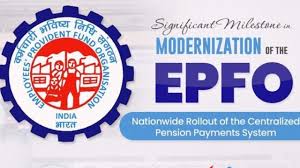
- 04 Jan 2025
In News:
- The CPPS aims to enhance pension accessibility and simplify the disbursement process for over 7.85 million pensioners in India.
- Key Benefit: Pensioners can now receive their pension from any bank or branch across India, eliminating the need for physical verifications and providing seamless nationwide pension disbursement.
Key Highlights:
- Key Features:
- No need for physical verification: Pensioners do not have to visit the bank for verification at the time of pension commencement.
- Seamless pension disbursement: Upon release, the pension amount is credited immediately.
- Nationwide access: Pensioners can withdraw their pension from any bank or branch, without needing to transfer Pension Payment Orders (PPO) when relocating or changing banks.
- Significance:
- Eliminates the decentralised pension system, where each regional office maintained separate agreements with a few banks.
- Ensures pension portability, especially for pensioners who move or change banks.
Employees’ Provident Fund Organisation (EPFO):
- Overview:
- EPFO is a statutory body under the Employees' Provident Funds and Miscellaneous Act, 1952, and works under the Ministry of Labour and Employment.
- Structure:
- Administered by a tripartite board called the Central Board of Trustees, consisting of representatives from:
- Government (Central & State)
- Employers
- Employees
- The Central Board of Trustees is chaired by the Union Minister of Labour and Employment.
- Administered by a tripartite board called the Central Board of Trustees, consisting of representatives from:
- Key Schemes Operated by EPFO:
- Employees’ Provident Funds Scheme, 1952 (EPF): A savings scheme for workers.
- Employees’ Pension Scheme, 1995 (EPS): A pension scheme for employees after retirement.
- Employees’ Deposit Linked Insurance Scheme, 1976 (EDLI): Provides life insurance coverage to workers.
- Global Coverage: EPFO is also the nodal agency for implementing Bilateral Social Security Agreements with other countries, offering reciprocal social security benefits to international workers from countries with such agreements.
- Impact: The EPFO schemes cover Indian workers and international workers from countries with which EPFO has signed bilateral agreements.
Key Facts:
- CPPS improves the convenience and accessibility of pension services for millions of pensioners across India by simplifying the pension disbursement process and providing nationwide access without the need for physical verifications.
- EPFO, a statutory body under the Ministry of Labour and Employment, plays a crucial role in managing provident funds, pensions, and insurance schemes for both domestic and international workers, fostering social security across India.
World’s First CO? to Methanol Plant
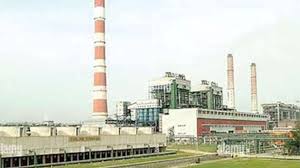
- 10 Nov 2024
In News:
- NTPC has achieved the first-ever synthesis of CO? (captured from flue gas) and hydrogen (produced via a PEM electrolyzer) into methanol at its Vindhyachal plant.
- This marks a significant step in carbon management technology, aimed at advancing sustainable fuel production.
About CO?-to-Methanol Conversion:
- Carbon Dioxide Capture:
- CO? is captured from industrial sources, such as power plants, or directly from the atmosphere.
- Hydrogen Production:
- Renewable energy sources like solar or wind power are used to produce hydrogen through water electrolysis.
- Methanol Synthesis:
- The captured CO? is combined with hydrogen in the presence of a catalyst to produce methanol, typically under high pressure and temperature conditions.
Benefits of CO?-to-Methanol Conversion:
- Carbon Capture and Utilization (CCU):
- This technology reduces the impact of CO? on the atmosphere by converting it into useful products.
- Renewable Fuel Source:
- Methanol produced through this process can be used as a fuel for transportation, power generation, or as a feedstock for chemicals.
- Energy Storage:
- Methanol offers a more practical storage and transportation option than hydrogen, making it a potential energy storage solution and aiding the transition to hydrogen-based energy systems.
- Versatile Feedstock:
- Methanol is widely used in producing chemicals, solvents, and plastics, supporting various industrial applications.
What is Methanol?
- Brief: Methanol, also known as methyl alcohol or wood alcohol, is the simplest form of alcohol. It is a clear, colorless, and flammable liquid with a distinctive odor.
- Key Properties:
- Colorless, miscible with water, toxic if ingested, flammable.
One Sun One World One Grid (OSOWOG) Initiative
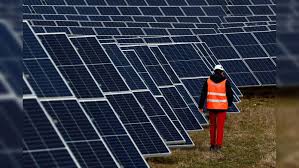
- 10 Nov 2024
In News:
- India is in talks with Oman, UAE, Saudi Arabia, Maldives, and Singapore to establish cross-border electricity transmission lines.
- This is part of the ambitious OSOWOG initiative to create a global renewable energy grid.
Key Points:
- Proposed by the Prime Minister of India at the 2018 International Solar Alliance (ISA) Assembly.
- Aims to create a transnational electricity grid that delivers power worldwide.
- Led by India and the UK, in collaboration with ISA and the World Bank Group.
Vision of OSOWOG:
- Connect regional grids through a common infrastructure for the transfer of renewable energy, focusing on solar power.
- Harness solar and other renewable energy from regions where the sun is shining and efficiently transmit it to areas of need.
- Aim to provide power to 140 countries using clean and efficient solar energy.
Phases of OSOWOG:
- Phase 1:
- Connect the Indian grid with grids in the Middle East, South Asia, and South-East Asia.
- Share solar and other renewable energy resources.
- Phase 2:
- Expand the interconnected grid to include renewable resources from Africa.
- Phase 3:
- Achieve a global interconnection aiming for 2,600 GW by 2050.
- Integrate as many countries as possible into a single renewable energy grid.
Global Collaboration:
- Involves national governments, international organizations, legislators, power operators, and experts.
- Focus on accelerating infrastructure development for a clean energy-powered world.
e-Migrate Portal
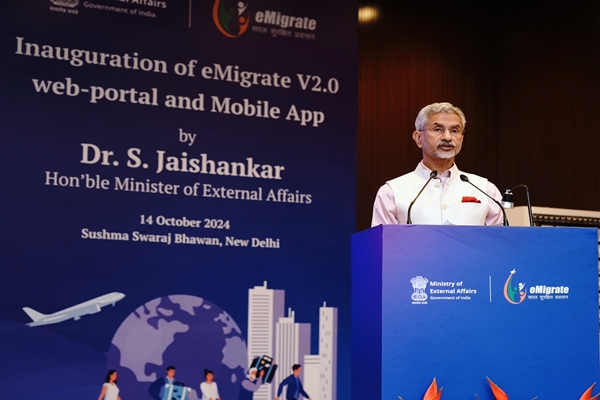
- 15 Oct 2024
In News:
Recently, the Union Ministers for External Affairs and Labour and Employment launched the upgraded e-Migrate portal and mobile app, aimed at enhancing the migration experience for Indian workers seeking employment abroad. This initiative reflects the Indian government's commitment to ensuring the safety and welfare of its migrant workforce, aligning with global migration goals under the 2030 Agenda for Sustainable Development.
About e-Migrate Portal
The e-Migrate portal is an online platform designed to facilitate and manage the migration of Indian workers. It promotes safe and legal mobility channels by providing a transparent framework for migrant workers, including:
- Information Access: Comprehensive resources to help migrants understand the migration process.
- Documentation Support: Tools to assist with necessary paperwork.
- Helpline Support: A 24/7 multilingual helpline that addresses issues faced by workers, particularly in the Gulf region.
- Awareness Campaigns: Initiatives to educate workers about their rights and responsibilities abroad.
The upgraded version of the portal, launched in October 2024, features enhanced functionality to better serve Indian migrants.
Key Features of e-Migrate v2.0
- Multilingual Helpline: Offers real-time support in multiple languages, ensuring that urgent issues are resolved efficiently.
- Integration with Digilocker: Facilitates secure, paperless submission of essential documents, such as passports and employment contracts.
- Social Security Net: Enhances social security measures for migrants, including insurance policies and partnerships with the State Bank of India for fee-free digital payment services.
- Mobile App: Introduced for the first time, this app provides easy access to services, including a job search marketplace for overseas employment opportunities.
- Rural Accessibility: Collaboration with Common Service Centres (CSCs) aims to expand immigration services to rural areas in local languages, making the platform more accessible to diverse populations.
Significance
The e-Migrate portal aligns with the United Nations' Sustainable Development Goal 10, which promotes orderly and responsible migration. By fostering safe migration practices, this initiative seeks to empower Indian workers and protect their rights while contributing to the country's international workforce.
National Maritime Heritage Complex (NMHC)
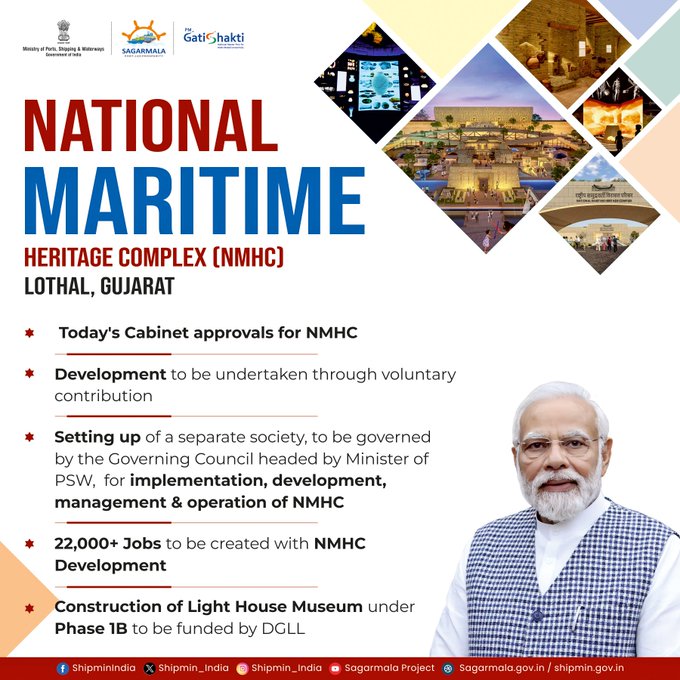
- 10 Oct 2024
In News:
The Union Cabinet has approved the development of NMHC in Lothal, Gujarat, under the Sagarmala programme.
- Purpose and Vision Aimed at showcasing India’s 4,500-year-old maritime heritage using an edutainment approach with modern technology.
Employment Generation
- Expected to create approximately 22,000 jobs: 15,000 direct and 7,000 indirect.
Project Phases
- Phase 1A
- Features a museum with 6 galleries, including:
- A large Indian Navy & Coast Guard gallery with external naval artifacts.
- Replica of Lothal township surrounded by an open aquatic gallery.
- A jetty walkway.
- Phase 1B
- Expansion includes:
- 8 additional galleries.
- The world's tallest Light House Museum.
- Bagicha complex with facilities for 1,500 cars, a food hall, and a medical center.
- Phase 2
- Development of Coastal States Pavilions by respective states and union territories.
- Hospitality zone featuring maritime-themed eco-resorts and museuotels.
- Recreation of ancient Lothal City and establishment of a Maritime Institute with hostel.
- Creation of four theme-based parks:
- Maritime & Naval Theme Park
- Climate Change Theme Park
- Monuments Park
- Adventure & Amusement Park
Governance and Management
- Governing Council
- Chaired by the Minister of Ports, Shipping & Waterways, overseeing project implementation and operation.
- Separate Society
- A dedicated society will manage future phases, governed under the Societies Registration Act, 1860.
Benefits and Funding
- Beneficiaries
- Local communities, tourists, researchers, government bodies, educational institutions, cultural organizations, conservation groups, and businesses.
- Funding
- Construction of the Light House Museum in Phase 1B will be financed by the Directorate General of Lighthouses and Lightships (DGLL).
Sagarmala Programme
- Objective
- A flagship initiative aiming to transform India’s maritime sector by enhancing logistics performance and fostering port-led development and coastal community upliftment.
- Background
- Approved in March 2015, the programme focuses on utilizing India’s extensive coastline and waterways for economic growth.
Pradhan Mantri Awas Yojana-Gramin (PMAY-G)
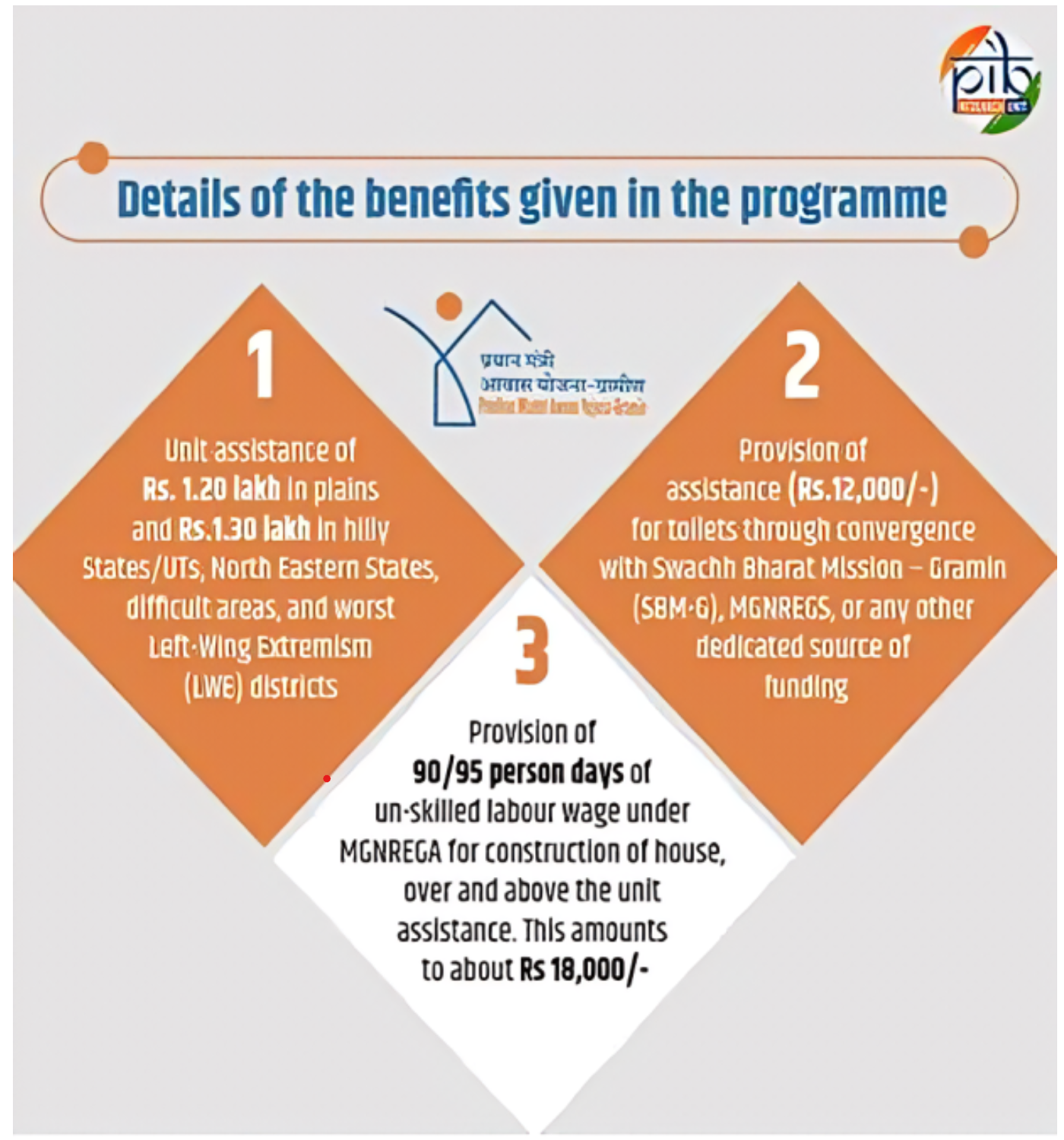
- 09 Oct 2024
Recent Initiatives:
- The Indian government has launched a nationwide survey of kutcha houses.
- Introduction of the Awas Sakhi mobile app to streamline housing assistance.
Purpose of the Kutcha House Survey
- Identify Housing Needs: The survey aims to collect data on families living in kutcha (temporary) houses, enabling targeted support for those in need.
- Support for Awas Sakhi App: The survey will enhance the functionality of the Awas Sakhi app, facilitating the application process and providing beneficiaries with vital housing information.
Overview of PMAY-G
- Launch: Initiated in 2016, PMAY-G aims to provide secure housing for the poorest communities.
- Beneficiary Selection Process: A comprehensive three-stage validation, including the Socio-Economic Caste Census 2011, Gram Sabha approvals, and geo-tagging, ensures that aid reaches those most deserving.
Benefits for PMAY-G Beneficiaries
- Financial Assistance:
- ?1.20 lakh for families in plain areas.
- ?1.30 lakh for families in hilly regions, including northeastern states and union territories.
- Support for Sanitation:
- An additional ?12,000 for toilet construction, aligned with the Swachh Bharat Mission – Gramin or MGNREGS.
- Employment Opportunities:
- Provision of 90/95 days of unskilled wage employment through MGNREGA for house construction.
- Access to Basic Amenities:
- Connections for water, LPG, and electricity facilitated through relevant schemes.
- Cost Sharing Structure:
- Expenses are shared in a 60:40 ratio for plain areas and a 90:10 ratio for northeastern states and selected Himalayan states. The Centre covers 100% of costs for other Union Territories.
Progress Under PMAY-G
- Targets: The government aims to construct 2.95 crore houses.
- Current Status: As of August 2024, 2.94 crore houses have been sanctioned, with 2.64 crore completed, enhancing living conditions for millions in rural areas.
Recent Developments
- In August 2024, the Union Cabinet approved funding for two crore additional houses at existing assistance rates.
- Eligibility Criteria Changes:
- Individuals owning bikes or scooters are now eligible.
- The income limit for eligibility has been raised from ?10,000 to ?15,000 per month.
Future Goals
- This initiative, spanning FY 2024-2029, aims to address ongoing housing demands, benefiting approximately 10 crore individuals by providing safe, hygienic, and socially inclusive housing.
MARBURG VIRUS OUTBREAK IN RWANDA
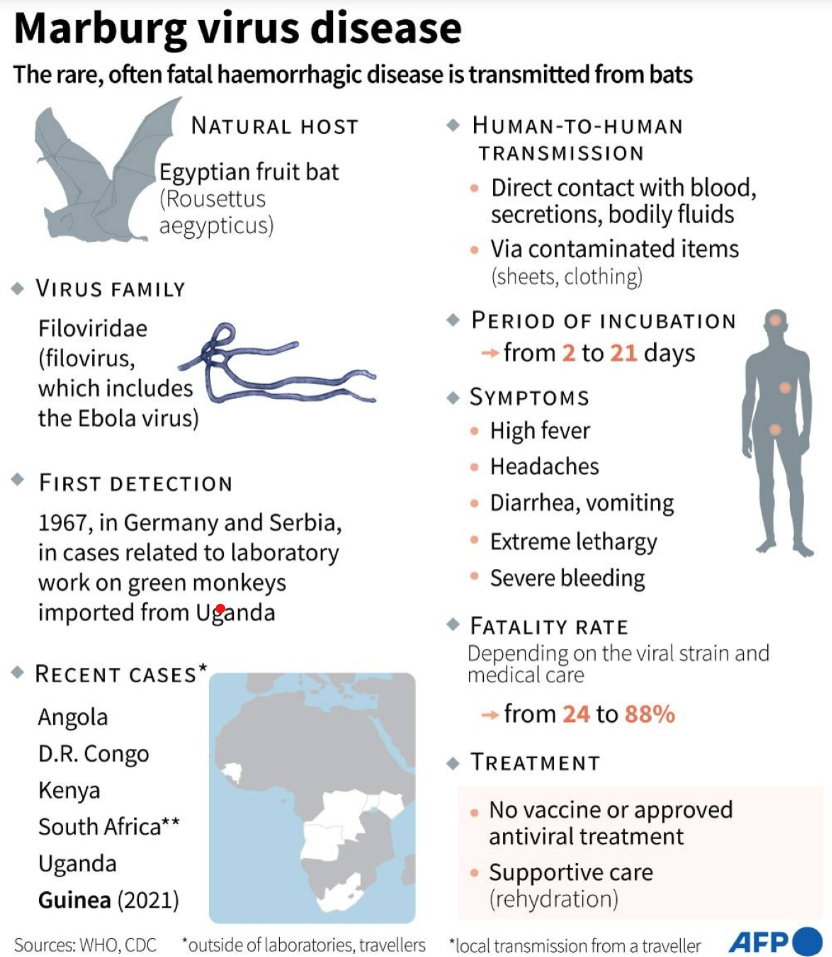
- 30 Sep 2024
In News:
Rwanda is currently facing an outbreak of Marburg virus disease (MVD), leading to six fatalities, primarily among healthcare workers.
What is Marburg Virus Disease?
Marburg virus disease is a severe and often fatal illness first identified in 1967 in Germany. It is caused by the Marburg virus, which is primarily transmitted to humans through contact with infected animals, particularly fruit bats.
Current Situation in Rwanda
The ongoing outbreak has claimed six lives, most of whom were healthcare professionals. The Minister of Health has emphasized the need for heightened preventive measures and community vigilance.
Symptoms and Transmission
Common symptoms of MVD include high fever, severe headache, watery diarrhea, abdominal pain, and vomiting. The virus spreads through direct contact with the blood, secretions, and bodily fluids of infected individuals.
Available Treatments and Supportive Care
There is currently no specific treatment for Marburg virus disease. Supportive care, including symptom management and hydration, is critical, and early medical attention is essential for those exhibiting symptoms.
Preventive Measures and Recommendations
To prevent the spread of MVD, individuals should:
- Practice good hygiene.
- Avoid contact with infected persons.
- Ensure thorough cooking of animal products.
- Use protective equipment when caring for sick patients.
Global Context and Pandemic Risk
While Marburg virus disease poses a significant mortality risk and can spread between humans, its pandemic potential is lower than that of more contagious viruses. Rapid containment efforts are essential to prevent wider outbreaks.
NIDHI Companies

- 16 Sep 2024
In News:
The Registrar of Companies has imposed penalties on over two dozen Nidhi companies for breaches of the Companies Act, such as delayed financial filings and share allotment issues. Fines range from ?20,000 to ?12.5 lakh, with Sri Sathuragiri Nidhi receiving the highest penalty.
What is Nidhi Company?
A Nidhi Company is a unique NBFC regulated under the Companies Act, 2013, and the Nidhi Rules, 2014. Nidhi company signifies that these companies promote thrift and savings habits among their members by accepting deposits and providing loans. They primarily cater to their local communities and operate within a defined geographical area.
Requirements for Obtaining Nidhi Company Status:
Within One Year of Registration:
- Minimum Membership: A Nidhi company must have at least 200 members within one year of starting operations.
- Financial Strength: The company's net owned funds (equity share capital + free reserves - accumulated losses - intangible assets) must be ?10 lakh or more.
- Deposit Security: Unencumbered term deposits (deposits not pledged as security) must be at least 10% of the total outstanding deposits.
- Healthy Debt Ratio: The ratio of net owned funds to deposits should not exceed 1:20. This ensures the company has sufficient capital to back its deposit liabilities.
Compliance Filing:
If a Nidhi company meets all the above conditions within the first year, it must file form NDH-1 along with the prescribed fees within 90 days from the end of that financial year. The form needs to be certified by a practicing Chartered Accountant (CA), Company Secretary (CS), or Cost and Works Accountant (CWA).
Extension Option:
Companies that are unable to meet the requirements within the first year can apply for an extension of one additional financial year. To do so, they need to submit form NDH-2 to the Regional Director within 30 days from the end of the first financial year.
Strict Enforcement:
If a Nidhi company fails to meet the requirements even after the second financial year, it will be prohibited from accepting new deposits until it complies with the regulations. Additionally, it may face penalties for non-compliance.
Benefits of Nidhi Company Registration
Nidhi companies offer several advantages for entrepreneurs:
- Tax benefits: They can enjoy tax exemptions on their profits under certain conditions.
- Reduced regulatory burden: Compared to other NBFCs, Nidhi companies face less stringent regulations.
- Local focus: They cater to the specific financial needs of their communities, fostering local economic development.
- Enhanced credibility: Registration brings legitimacy and builds trust among members.
Eligibility for Nidhi Company Registration
For registration of Nidhi company, the following requirements must be met:
- Minimum members: A minimum of seven members are required at the time of incorporation.
- Minimum capital: The minimum paid-up capital must be Rs. 5 lakh.
- Business restrictions: Nidhi companies cannot undertake activities like issuing debentures or underwriting insurance.
- Profit distribution: They can only distribute a maximum of 20% of their net profit as dividend.
Shanghai Cooperation Organisation (SCO) Startup Forum
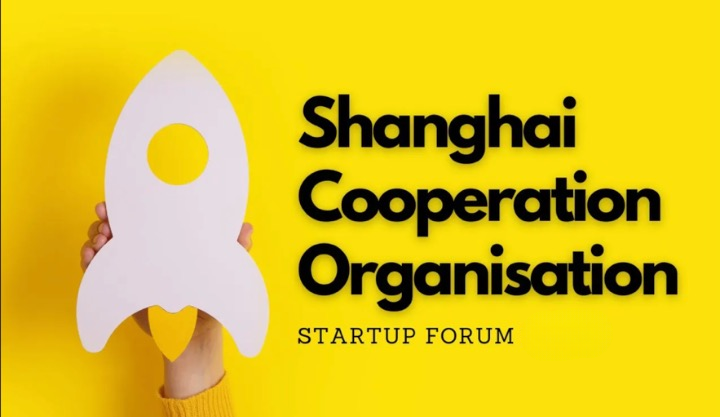
- 22 Mar 2024
Why is it in the News?
India will host the fifth meeting of the Shanghai Cooperation Organisation startup forum in January next year according to the commerce and industry ministry.
About the Shanghai Cooperation Organisation Startup Forum:
- The SCO Startup Forum is a platform for the stakeholders from the startup ecosystems from all SCO Member States to interact and collaborate.
- The entrepreneurial activities aim to empower the local startup communities in the SCO Member States.
- The SCO Startup Forum aims to create multilateral cooperation and engagement for startups among the SCO Member States.
- This engagement will empower the local startup ecosystems in the SCO Member States.
The following are the objectives of the engagement:
- Sharing of best practices to promote entrepreneurship and innovation to build knowledge-exchange systems
- Bringing Corporations and Investors across to work closely with startups and provide local entrepreneurs with much-needed support and market access
- Increasing scaling opportunities for startups by providing solutions in the field of social innovation and providing Governments with a plethora of innovative solutions
- Creating open procurement channels to enable matchmaking for procuring innovative solutions from startups
- Facilitating cross-border incubation and acceleration programs that will enable the startups to explore international markets and get focused mentorship.
Upcoming Events:
- India is set to host the second meeting of the Special Working Group for Startups and Innovation (SWG) in November 2024 and the SCO Startup Forum 5.0 in January 2025.
Past Initiatives:
- SCO Startup Forum 1.0: Established in 2020, laying the groundwork for multilateral cooperation among SCO Member States' startups.
- SCO Startup Forum 2.0: Held virtually in 2021, introducing the SCO Startup Hub, a centralized platform for the SCO startup ecosystem.
- SCO Startup Forum 3.0: Organized physically in 2023 by the Department for Promotion of Industry and Internal Trade (DPIIT), marking a significant milestone for SCO Member States' startup collaboration.
- 1st Meeting of the SWG: Led by India, the first meeting of the SCO Special Working Group on Startups and Innovation in 2023 focused on the theme 'Growing from Roots', emphasizing foundational growth within the startup ecosystem.
'ETHANOL 100' hits the road at 183 Indian Oil stations in five states
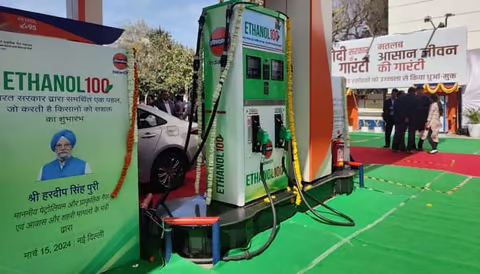
- 16 Mar 2024
Why is it in the News?
In a strategic advance towards cleaner fuel alternatives, India commenced the sale of ETHANOL 100 across 183 Indian Oil outlets in Maharashtra, Karnataka, Uttar Pradesh, New Delhi, and Tamil Nadu.
What is ETHANOL 100 Fuel?
- ETHANOL 100 fuel represents a significant advancement in automotive technology, offering a high-octane rating ranging from 100 to 105.
- This elevated octane level is particularly advantageous for high-performance engines, delivering improved efficiency and power output while simultaneously reducing environmental impact.
- One of the key features of ETHANOL 100 is its remarkable versatility, making it suitable for a diverse range of vehicles, including flex-fuel vehicles (FFVs) designed to accommodate various fuel types such as gasoline, ethanol, or any blend thereof.
- This adaptability ensures that ETHANOL 100 can seamlessly integrate into existing automotive fleets without requiring extensive modifications or infrastructure upgrades.
- The composition of ETHANOL 100 consists of approximately 93 to 93.5 percent ethanol blended with 5 percent petrol and 1.5 percent co-solvent acting as a binder.
- This well-balanced formulation not only enhances fuel performance but also contributes to its practicality as a mainstream fuel option.
- In addition to its performance benefits, ETHANOL 100 stands out as a cleaner and greener alternative to traditional gasoline.
- By emitting lower levels of greenhouse gases and pollutants, such as carbon dioxide and particulate matter, ETHANOL 100 plays a crucial role in mitigating climate change and improving air quality in our communities.
- With the right infrastructure and support mechanisms in place, ETHANOL 100 has the potential to revolutionize the automotive industry by offering a sustainable and eco-friendly fuel solution that aligns with the global efforts to combat environmental degradation and promote sustainable development.
What are Flex-fuel Vehicles?
- Flex-fuel vehicles are engineered to operate on a diverse range of fuels, offering consumers the flexibility to choose between petrol, ethanol, or methanol at the point of refueling.
- Equipped with an internal combustion engine (ICE), these vehicles can seamlessly switch between different fuel types, providing versatility and convenience to drivers.
- While possessing similarities to conventional petrol-only cars, flex-fuel vehicles undergo minor modifications to accommodate the use of alternative fuels, ensuring compatibility and optimal performance across various fuel options.
India launches revamped scheme to help advance pharma industry's tech capabilities

- 12 Mar 2024
Why is it in the News?
India's Department of Pharmaceuticals recently unveiled the Revamped Pharmaceuticals Technology Upgradation Assistance Scheme (RPTUAS) to help advance the technological capabilities of India's pharmaceutical industry and align it with global standards.
What is the Pharmaceuticals Technology Upgradation Assistance Scheme?
- In an effort to support pharma companies aligned with global quality standards, the Department of Pharmaceuticals (DoP) has announced a revamped Pharmaceuticals Technology Upgradation Assistance (RPTUAS) Scheme.
- It has been incorporated as a sub-scheme under the Scheme - Strengthening of Pharmaceutical Industry (SPI), which was launched in July 2022.
Objective:
- To facilitate Micro, Small and Medium Pharma Enterprises (MSME) of proven track record to upgrade their technology to meet WHO-GMP or Schedule M standards.
Intended Beneficiaries:
- Micro, Small and Medium Enterprises of the pharma sector.
Key Features of the Revised Scheme:
- Broadened Eligibility Criteria: Reflecting a more inclusive approach, eligibility for the PTUAS has been expanded beyond Micro, Small and Medium Enterprises to include any pharmaceutical manufacturing unit with a turnover of less than 500 crores that requires technology and quality upgradation.
- Preference remains for MSMEs, supporting smaller players in achieving high-quality manufacturing standards.
- Flexible Financing Options: The scheme introduces more flexible financing options, emphasizing subsidies on reimbursement basis, over traditional credit-linked approaches.
- Comprehensive Support for Compliance with New Standards: In alignment with revised Schedule-M and WHO- Good Manufacturing Practice (GMP) standards, the scheme now supports a broader range of technological upgrades.
- Eligible activities include improvements such as HVAC systems, water and steam utilities, testing laboratories etc.
- State Government Scheme Integration: The revised scheme allows integration with state government schemes, enabling units to benefit from additional top-up assistance. This collaborative approach aims to maximize support for the pharmaceutical industry in their technology upgradation efforts.
- The new benefit limit is based on turnover of the company. Units with less than Rs 5 crore turnover will get an incentive of 20 percent of investment under eligible activities.
- The units with turnover ranging from Rs 50 crore to less than Rs 250 crore will get an incentive of 15 percent of investment, while for those with turnover ranging from Rs 250 crore to less than Rs 500 crore, it will be 10 percent of investment under eligible expenses.
India ranks 113 out of 190 countries in the World Bank’s legal gender gap index
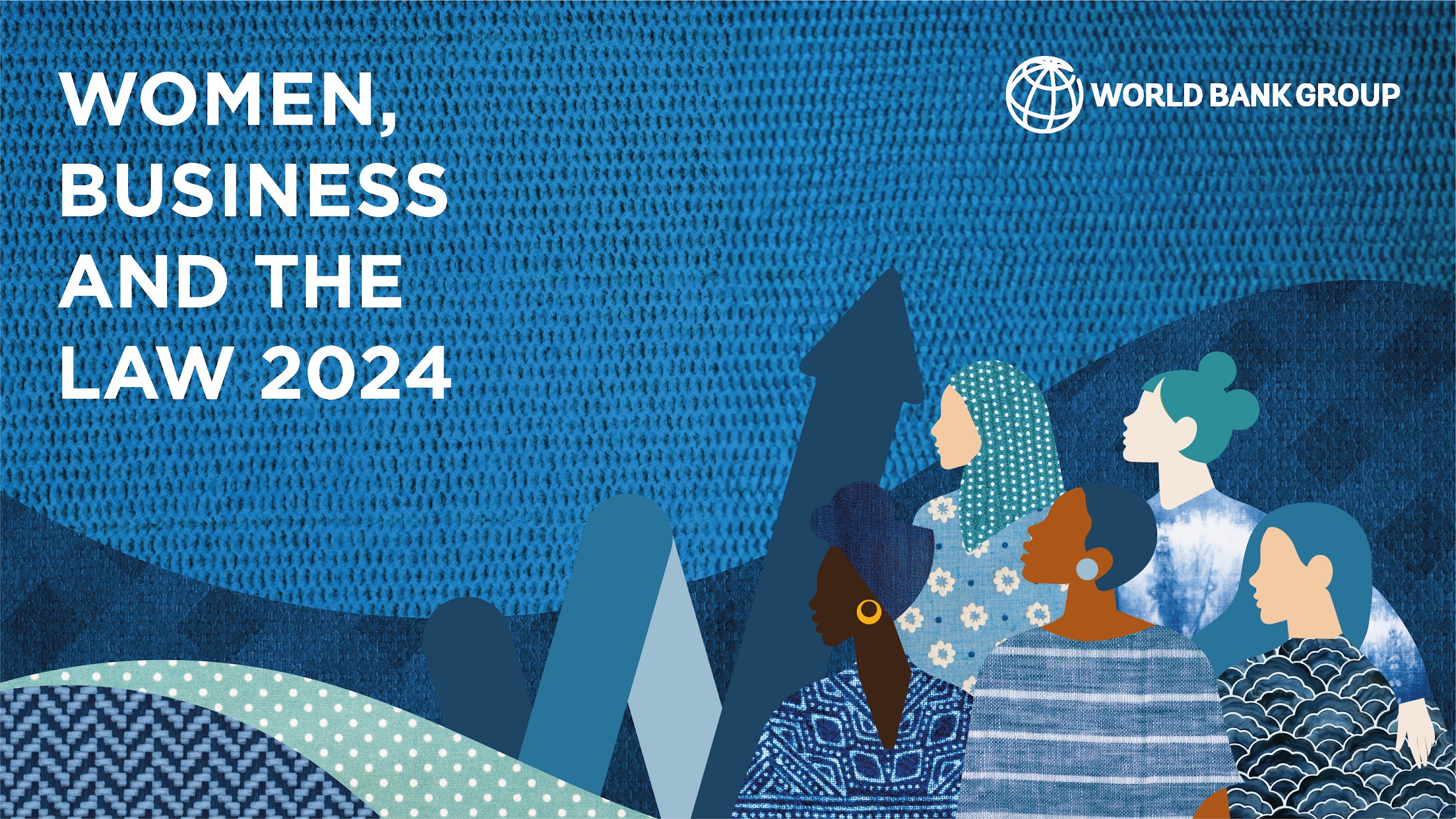
- 05 Mar 2024
Why is it in the News?
India's ranked improved to 113 out of 190 countries in the World Bank’s Women, Business and Law index, according to the 10th edition of the report released Monday.
About Women, Business and Law Index:
- The "Women, Business and the Law (WBL)" index is a project of the World Bank Group, specifically designed to measure the legal environment for women's economic opportunities across 190 economies.
- It's distinct from a general "Gender Equality Index" as it focuses specifically on legal frameworks and their impact on women's involvement in business and professional life.
What does it Measure?
- The WBL index assesses legal frameworks across eight indicators:
- Mobility (freedom of movement)
- Workplace (discrimination, maternity leave, etc.)
- Pay (equal pay for equal work)
- Marriage (property rights, domestic violence)
- Parenthood (parental leave, child custody)
- Entrepreneurship (starting and running a business)
- Assets (ownership and inheritance)
- Pension (access to and benefits)
- Scoring: Each indicator is scored on a scale of 0 to 100, with 100 representing the highest level of legal rights and protections for women.
- The overall score for a country is the average of these eight indicators.
- Latest version: The latest edition is "Women, Business and the Law 2024", released in October 2023.
- This version also introduces two new indicators:
- Safety (addressing violence against women)
- Childcare (availability, affordability, and quality)
Highlights of the Report:
- Women spend an average of 2.4 more hours a day on unpaid care work than men—much of it on the care of children.
- Only 62 economies—fewer than a third—have quality standards governing childcare services, which has an adverse impact on the employment opportunity of women as mothers with young children have their battles to pick.
- Women face hindrances in areas such as entrepreneurship as just one in every five economies mandate gender-sensitive criteria for public procurement processes, meaning women are deprived of significant economic opportunities.
About India:
- According to the 10th edition of the Women, Business and Law index, India ranks 113 out of 190 countries in the Index.
- The addition of Safety and childcare as indicators in the new index is believed to have improved India’s ranking slightly.
- The index shows that in India, women enjoy 60% of the legal rights compared to men, which is lower than the global average of 64.2%, but much higher than the 45.9% of the legal protections compared to men.
- Over the years, India’s score has remained constant at 74.4%, whereas a total of 14 countries around the world, including Denmark, Canada, and Finland, score a perfect 100 in the legal framework score.
- Some of the less developed countries like Ethiopia, Namibia, and even Burundi have better scores than India.
- India’s performance is much lower in providing supportive frameworks, such as programs, services, budgets, procedures, inspections, and sanctions for non-compliance with quality standards.
- Only 54.2% of the supportive frameworks needed were established in the country.
DoT launches Digital Intelligence Portal, ‘Chakshu’ facility to curb cyber crimes, financial frauds
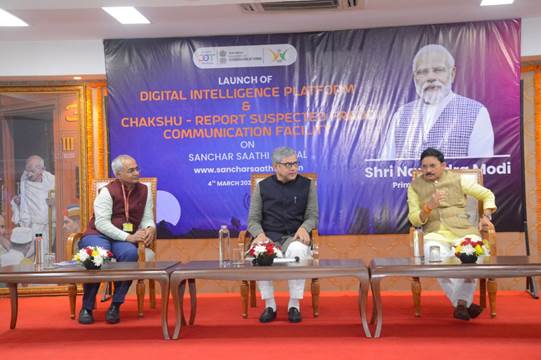
- 05 Mar 2024
Why is it in the News?
The Department of Telecommunications (DoT) recently launched its ‘Digital Intelligence Platform (DIP)’ to curb the misuse of telecom resources in cybercrimes and financial frauds, and the ‘Chakshu’ facility on the Sanchar Saathi portal to enable citizens to report suspected fraud communication.
About Digital Intelligence Platform (DIP):
- Digital Intelligence Platform (DIP) is developed by the Department of Telecommunications.
- It is a secure and integrated platform for real time intelligence sharing, information exchange and coordination among the stakeholders i.e. Telecom Service Providers (TSPs), law enforcement agencies (LEAs), banks and financial institutions (FIs), social media platforms, identity document issuing authorities etc.
- The portal also contains information regarding the cases detected as misuse of telecom resources. The shared information could be useful to the stakeholders in their respective domains.
- It also works as a backend repository for the citizen-initiated requests on the Sanchar Saathi portal for action by the stakeholders.
- The DIP is accessible to the stakeholders over secure connectivity and the relevant information is shared based on their respective roles.
- The said platform is not accessible to citizens.
What is the Chakshu Facility?
- Chakshu is the latest addition to the citizen centric facilities already available on the Sanchar Saathi portal of DoT.
- It facilitates citizens to report suspected fraud communication received over call, SMS or WhatsApp with the intention of defrauding like KYC expiry or update of bank account / payment wallet / SIM / gas connection / electricity connection, sextortion, impersonation as government official / relative for sending money, disconnection of all mobile numbers by Department of Telecommunications etc.
- In case, a citizen is already a victim of cyber-crime or financial fraud, it is advised to report at cyber-crime helpline number 1930 or website https://www.cybercrime.gov.in of Government of India.
Malta becomes the 119th member of the International Solar Alliance
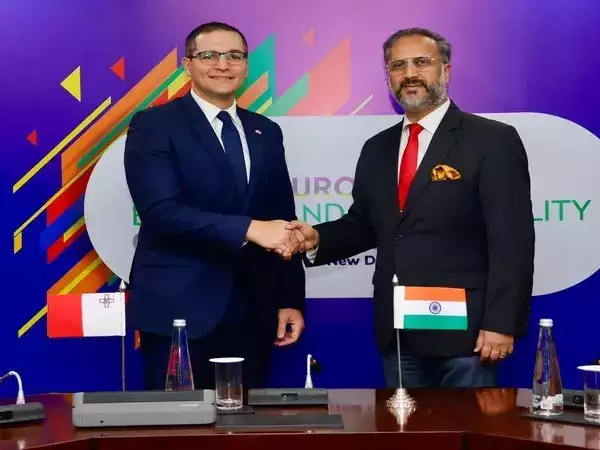
- 21 Feb 2024
Why is it in the News?
Malta became the 119th country to join the International Solar Alliance recently.
About the International Solar Alliance (ISA):
- The International Solar Alliance (ISA) is an alliance of more than 120 signatory countries that aims to reduce the dependence on non-renewable sources of energy like fossil fuels.
- Currently, 118 countries are signatories to the ISA Framework Agreement.
- The ISA is an action-oriented, member-driven, collaborative platform for increased deployment of solar energy technologies as a means for bringing energy access, ensuring energy security, and driving energy transition in its member countries.
- The platform strives to develop and deploy cost-effective and transformational energy solutions powered by the sun to help member countries develop low-carbon growth trajectories, with a particular focus on delivering impact in countries categorised as Least Developed Countries (LDCs) and the Small Island Developing States (SIDS).
- The ISA was conceived as a joint effort by India and France to mobilise efforts against climate change through the deployment of solar energy solutions.
- It was conceptualised on the sidelines of the 21st Conference of Parties (COP21) to the United Nations Framework Convention on Climate Change (UNFCCC) held in Paris in 2015.
Role of India:
- As a founding member, India holds a pivotal position within the alliance, serving both as a host nation and a major contributor to achieving its objectives.
- The ISA marks a historic milestone as the first international organisation to establish its secretariat in India.
- With a target of generating 100 GW of solar energy by 2022, India's commitment represents a significant portion of the ISA's overall goal.
Recent Developments:
- The ISA was granted Observer Status by the UN General Assembly, fostering closer collaboration between the alliance and the United Nations to advance global energy growth and development.
- The approval of the 'Solar Facility' by the ISA introduces a payment guarantee mechanism aimed at incentivizing investments in solar projects, further driving progress towards sustainable energy initiatives.
Coal Ministry Hosts Industry Interaction on Coal Gasification (ET)
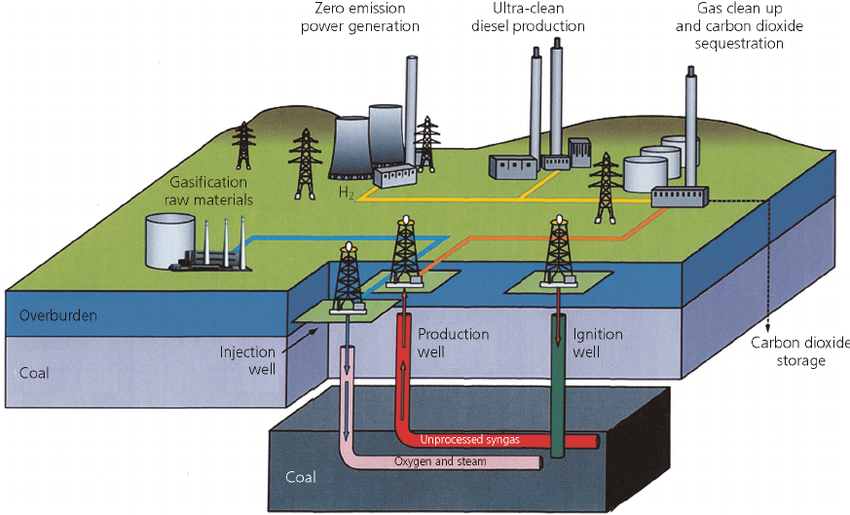
- 16 Feb 2024
Why is it in the News?
The Ministry of Coal has announced it will host an Industry Interaction on February 16, 2024, in Hyderabad to discuss the development of coal and lignite gasification projects across India.
What is Coal Gasification?
- Coal gasification is a process where coal undergoes partial oxidation with air, oxygen, steam, or carbon dioxide to produce a fuel gas.
- This gas serves as an alternative to piped natural gas or methane for energy generation.
- Underground Coal Gasification (UCG) is a technique involving the conversion of coal into gas within the seam, extracted through wells.
- Production of Syngas: This process yields Syngas, a mixture primarily comprising methane (CH4), carbon monoxide (CO), hydrogen (H2), carbon dioxide (CO2), and water vapour (H2O).
- Syngas finds applications in producing fertilisers, fuels, solvents, and synthetic materials.
- Significance: In manufacturing, steel companies traditionally rely on costly imported coking coal. Syngas derived from coal gasification offers a cost-effective alternative.
- It is utilized in electricity generation, chemical feedstock production, and hydrogen-based applications like ammonia production and fueling a hydrogen economy.
Advantages of Coal Gasification:
- Coal gasification offers a solution to local pollution issues.
- It is deemed environmentally cleaner than direct coal combustion.
- Decreasing dependence on imported natural gas, methanol, ammonia, and other vital commodities, enhances energy security.
- This technology has the potential to mitigate environmental impacts by curbing carbon emissions and promoting sustainable approaches, aligning with India's global objectives for a more environmentally sustainable future.
Concerns Associated with Coal Gasification Plants?
- The main disadvantage of coal gasification is that it is an expensive process.
- The process can produce a number of harmful emissions, including carbon dioxide, sulphur dioxide, nitrogen oxides, and mercury.
- The process produces a lot of ash, which can pollute the environment.
- The process uses a lot of water, which can lead to water shortages in areas where it is used.
Revised Guidelines for Community Radio Stations (ET)

- 14 Feb 2024
Why is it in the News?
With a view to ensuring the growth of the community radio sector, the Union government on Tuesday increased the advertising time for community radio stations as well as the tariff rate for advertisements.
What are Community Radio Stations (CRSs?
- Community radio stations (CRSs) are low-power radio stations with a coverage area of approximately a 10-15 km radius, depending on the area’s geography, which is meant to be set up and operated by local communities.
- They offer a platform where content is disseminated in localized dialects and regional languages.
- Local, context-specific issues are raised and discussed in these stations in local idioms.
- India's first community radio station (CRS) was inaugurated on the campus of Anna University in 2004.
- Currently, there are 481 CRSs in India.
About the Revised Policy Guidelines:
- Under the revised policy, the government has permitted any eligible organisation functional in multiple districts to set up a maximum of six community radio stations in different districts.
- The advertising time for community radio stations has been increased from seven minutes per hour to 12 minutes per hour, while the rate of advertisement has been hiked from Rs 52 to Rs 74 per 10 seconds, the guidelines stated.
- The policy also fixed the validity of the letter of intent issued to an organisation to one year, with a buffer of three months to the applicant for any unforeseen circumstances.
- The revised policy guidelines are expected to fuel the growth of the community radio sector.
- The guidelines stated that the licensee would set up an advisory and content committee comprising members of the local community, with 50 per cent representation for women.
First meeting of Social Audit Advisory Body reviews social justice schemes (ET)
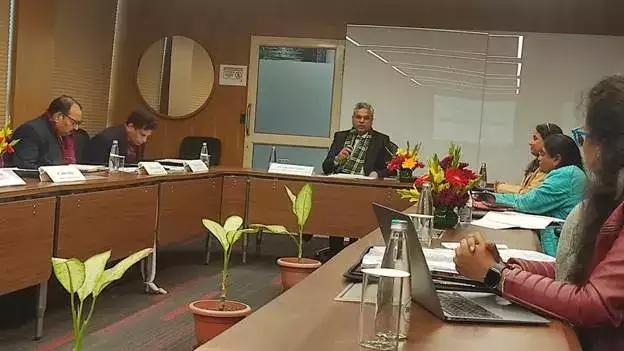
- 23 Jan 2024
Why is it in the News?
The first meeting of the Social Audit Advisory Body (SAAB) was held last week at the conference hall, Dr Ambedkar International Centre, New Delhi.
What is the Social Audit Advisory Body (SAAB)?
- Social Audit Advisory Body (SAAB) is a first-of-its-kind advisory body in India.
- It is set up under the National Institute of Social Defence (NISD), which functions under the Department of Social Justice & Empowerment (DoSJE), Ministry of Social Justice and Empowerment.
- It will guide the Ministry as it institutionalizes social audits for each of its programs.
- It will support the Social Justice Cell of the Social Audit Unit members in developing their abilities.
What is a Social Audit:?
- A social audit is a procedure that involves looking over and evaluating a plan or program.
- People actively participate in the process, which involves comparing government data with actual ground realities.
- Important tenets of SA include:
- Protection of citizens (Suraksha)
- Participation (Bhagidari), and
- Information access (Jaankari).
Implementation of Social Audit:
- The Mahatma Gandhi National Rural Employment Guarantee Act (MGNREGA), among other hallmark programs, now include the provision of Social Audit (SA) with the efforts of the Union Government.
- In order to guarantee SA through specialized Social Audit Units at the state level, DoSJE developed the National Resource Cell for Social Audit (NRCSA).
- The first state to put a social audit statute into effect was Meghalaya.
Significance: Promote transparency and accountability,
-
- strengthen institutions at the grassroots level etc.
Challenges: Lack of awareness among stakeholders, apathetic attitude of implementing agency etc.
Steps for SocialAudit:
- Orientation and Sensitization:: Conducted by the implementing agency.
- Presentation: Creating a social audit team.
- Verification: Verifying information with beneficiaries, inmates, stakeholders, and institution staff.
- Validation: Presenting the initial report for validation.
- Presentation and Action: Sharing findings at the district level with all stakeholders present.
MeitY signs MoU with Cuba for cooperation on digital public infrastructure (ET)
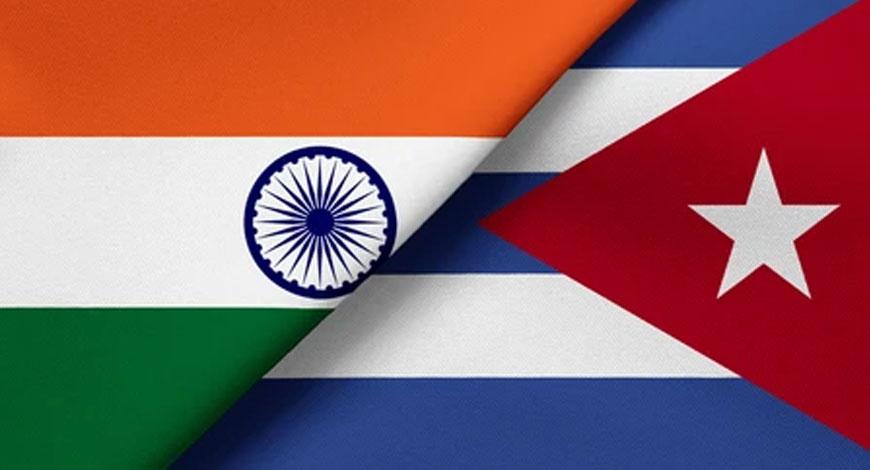
- 22 Jan 2024
Why is it in the News?
India and Cuba have signed an MoU for cooperation in the field of sharing successful digital solutions implemented at the population scale for digital transformation.
India and Cuba Bilateral Relations:
- India and Cuba share a robust and longstanding diplomatic camaraderie, marked by warmth and amity.
- In a gesture of early support, India was among the first nations to acknowledge and establish relations with the new Cuban government post the revolutionary events in January 1959.
- Trade Dynamics: The bilateral trade engagement, while moderate, exhibits a diverse array of commodities.
- India exports pharmaceutical products, organic chemicals, plastic goods, medical equipment, engineering items, textiles, metal products, mineral oil products, and tools to Cuba.
- Conversely, Cuba primarily imports pharmaceuticals and tobacco products from India.
- Energy Partnership: A pivotal facet of India-Cuba relations is their collaboration in the energy sector.
- As a member country and Vice-President of the Latin America & the Caribbean region at the International Solar Alliance (ISA), Cuba plays a significant role in fostering energy cooperation between the two nations.
- Advancements in Science & Technology, Biotechnology, and Health: The bilateral relations in the domains of science, technology, and health have been fortified through ministerial-level visits from both nations.Development Collaboration: Prioritizing development assistance has been a cornerstone of their bilateral ties.
- India has extended disaster relief assistance to Cuba in the aftermath of hurricanes that have afflicted the region over the years.
- Cultural Relations: Cuban appreciation for Indian culture and civilization is evident, with figures like Mahatma Gandhi, Jawaharlal Nehru, and Rabindranath Tagore holding a special place in Cuban hearts.
- Indian Diaspora: Although the Indian community in Cuba is relatively small, it includes descendants of Indians who migrated to Cuba in the early twentieth century from Jamaica and other parts of the West Indies to contribute to sugarcane plantations.
What is Digital Public Infrastructure (DPI)?
- DPI is a digital network that enables countries to safely and efficiently deliver economic opportunities and social services to all residents.
- DPI can be compared to roads, which form a physical network that connects people and provides access to a huge range of goods and services.??
- DPI allows people to open bank accounts and receive wages faster and more easily.
- It allows governments to support citizens more quickly and efficiently, especially during emergencies.
- And it enables entrepreneurs to reach customers far and wide.??
- A strong DPI has three foundational systems—identity, payments, and data exchange—that together can make life easier in important ways.?
- When the three core systems—identity, payments, and data exchange—exist simultaneously and can talk to one another, people, businesses, and governments can reap the full benefits of DPI.
- Over time, safe and inclusive DPI creates vibrant and competitive economies.?
iDEX innovators to exhibit futuristic technologies at Vibrant Gujarat summit (ET)
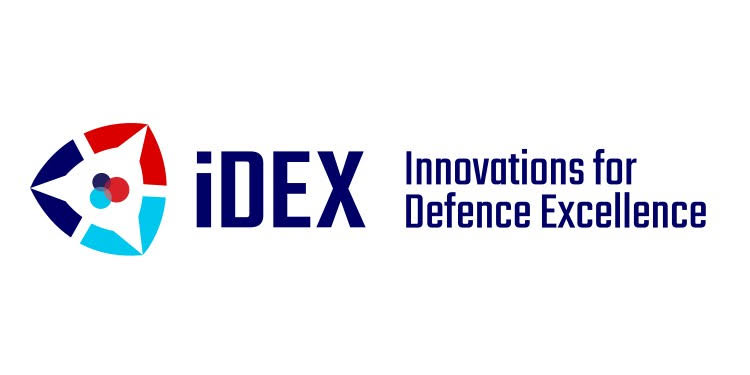
- 08 Jan 2024
Why is it in the News
The Ministry of Defence on Sunday said that Innovations for Defence Excellence-Defence Innovation Organization (iDEX-DIO) will participate in the 10th edition of the Vibrant Gujarat Summit from January 10 to 12 in Gandhinagar.
About iDEX:
- iDEX (Innovations for Defence Excellence), the flagship scheme of the Ministry of Defence, Govt of India launched by Prime Minister Modi in 2018.
- The objective of the scheme is to cultivate an innovation ecosystem in the Defence and Aerospace sector by collaborating with startups, innovators, MSMEs, incubators, and academia.
- iDEX offers grants and support for R&D with significant potential for future adoption in Indian defense and aerospace.
- It is currently engaged with around 400+ Startups and MSMEs, till now procurement of 31 items worth over Rs 2000 Cr. has been cleared.
- Recognized as a game-changer in the defense ecosystem, iDEX has received the PM Award for Innovation in the defense sector.
What is the Vibrant Gujarat Summit?
- The Government of Gujarat organizes the Vibrant Gujarat Global Summit, also known as Vibrant Gujarat, a biennial global business event held in the state of Gujarat, India.
- It attracts business leaders, investors, corporations, thought leaders, and policymakers, serving as a platform to understand and explore business opportunities in Gujarat.
- Launched in 2003 and now held every two years, the summit aims to promote Gujarat as an attractive investment destination, fostering partnerships and collaborations across various sectors.
- Industry associations, both nationally and internationally, support the summit, making it one of Gujarat's crucial economic forums.
- The event creates a platform for business leaders, policymakers, and investors to explore opportunities for investment, collaboration, and partnership in sectors such as energy, manufacturing, infrastructure, information technology, agriculture, healthcare, and more.
- It facilitates discussions, negotiations, and agreements in these key sectors.
- The Tenth edition of Vibrant Gujarat Global Summit is being held from 10 to 12 January 2024 in Gandhinagar, Gujarat.
- Its theme is 'Gateway to the Future'.
- This Tenth Edition of the Summit will celebrate “20 Years of Vibrant Gujarat as the Summit of Success”.
- There are 34 Partner countries and 16 Partner organizations for this year’s Summit.
- Further, the Ministry of Development of North-Eastern Region will utilize the Vibrant Gujarat platform to showcase investment opportunities in the North-Eastern regions.
India, Pakistan exchange list of nuclear installations and facilities (ET)
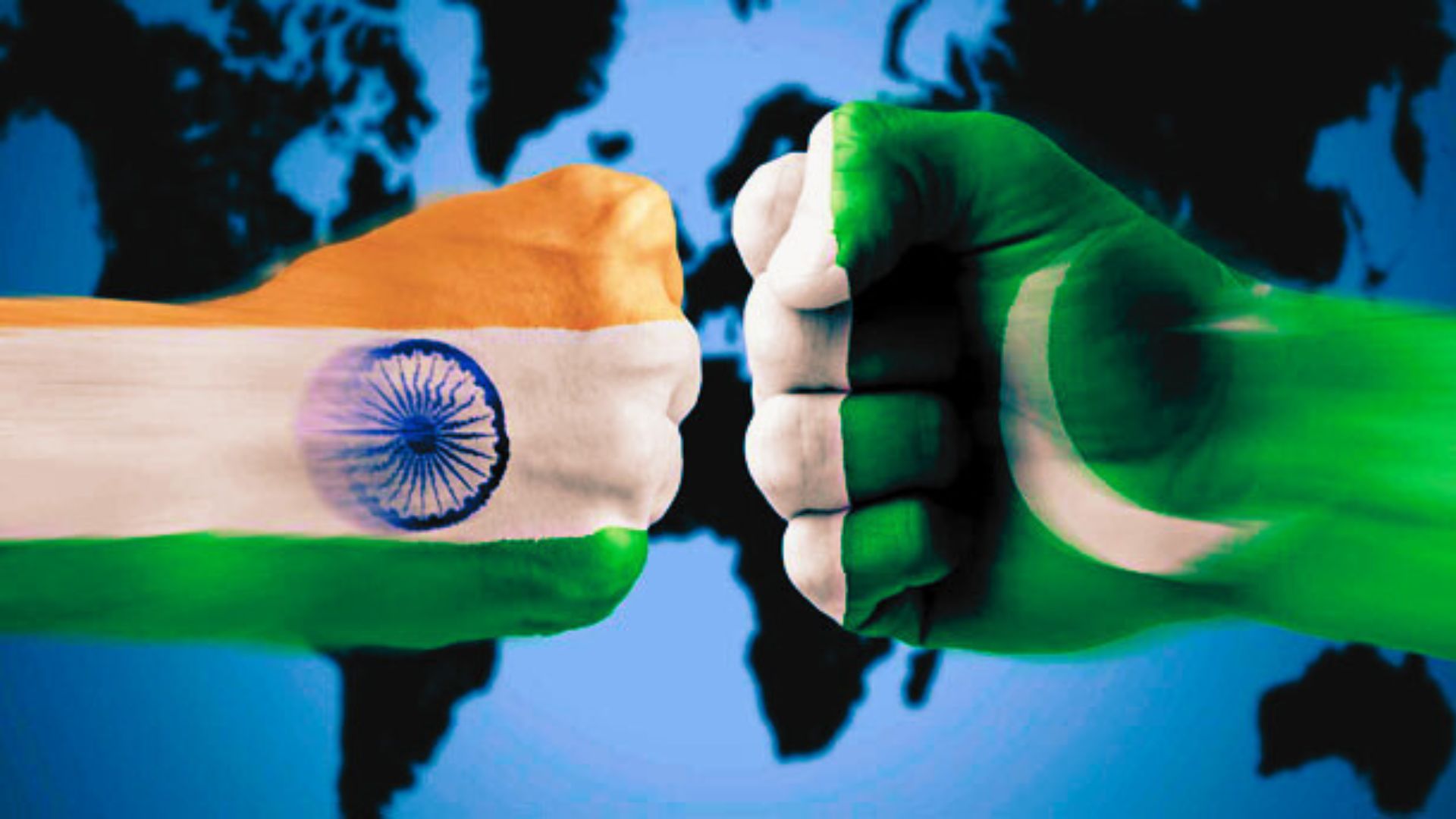
- 02 Jan 2024
Why is it in the News?
India and Pakistan exchanged the list of nuclear installations and facilities, covered under the Agreement on the Prohibition of Attack against Nuclear Installations and Facilities between the two countries.
About the Prohibition of Attack against Nuclear Installations and Facilities:
- The Agreement on the Prohibition of Attack against Nuclear Installations and Facilities, also known as the India-Pakistan Non-Attack Agreement, was signed on 31 December 1988 and became effective on 27 January 1991.
- It was signed by the then Pakistani PM Benazir Bhutto and Indian PM Rajiv Gandhi.
- According to this agreement, both India and Pakistan are required to annually communicate the list of nuclear installations and facilities covered by the agreement on the first of January of each calendar year.
- The agreement stipulates that neither party shall engage, directly or indirectly, in any actions aimed at causing destruction or damage to any nuclear installation or facility in the other country.
- The term 'nuclear installation or facility' encompasses nuclear power and research reactors, fuel fabrication, uranium enrichment, isotopes separation, reprocessing facilities, as well as any other installations involving fresh or irradiated nuclear fuel and materials in any form, along with establishments storing significant quantities of radioactive materials.
Need for the Agreement:
- In 1986, heightened concerns arose when the Indian army conducted a large-scale exercise named 'Brasstacks,' prompting fears of a potential assault on nuclear facilities.
- Subsequently, negotiations ensued between the two nations aimed at fostering an understanding regarding the management of nuclear weapons, ultimately leading to the formulation of the treaty.
Importance of the Agreement:
- Both nations reiterate their dedication to enduring peace and the cultivation of amicable and harmonious bilateral relations.
- They recognize the significance of confidence-building measures in fostering such relations built on mutual trust and goodwill.
- The potential consequences of even a limited nuclear exchange between India and Pakistan are grave, with the potential to cause the loss of 20 million lives within a week.
Mandarin-Trained Territorial Army Inducted At LAC (ET)
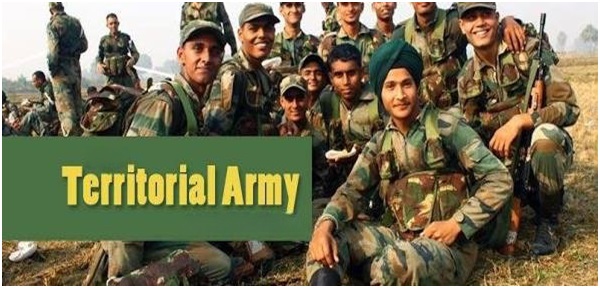
- 09 Oct 2023
Why in the News?
Recently the Territorial Army (TA) has inducted its first batch of Mandarin-trained officers to support the regular Army's efforts to enhance expertise in the Chinese language.
What is the Territorial Army (TA)?
- The Indian Territorial Army (TA) acts as the second line of defence, complementing the regular Indian Army.
- It is distinct in its role, being neither a profession, occupation, nor a source of employment.
- Reserved for individuals engaged in mainstay civilian professions, gainful employment or self-employment in a civil field is a prerequisite for joining the TA.
Key Roles:
- Relieving Regular Army: Primarily tasked with relieving the Regular Army from static duties.
- Assistance in Emergencies: Provides crucial assistance to civil authorities during natural calamities and tragedies.
- Essential Services: Aids civil administration in delivering essential services, particularly in areas facing stretched state machinery or security threats.
Service Commitment:
- Part-Time Service: TA volunteers typically serve in uniform for a few days annually, ensuring their readiness to bear arms for national defence during emergencies.
Historical Background:
- Established by the British in 1920 through the Indian Territorial Act, organized into 'The Auxiliary Force' for Europeans & Anglo-Indians and 'The Indian Territorial Force' for Indian Volunteers.
- The Territorial Army Act of 1948 formalized the TA, inaugurated by the first Indian Governor General, Shri C Rajagopalachari, on 9th October 1949.
- Motto: Savdhani Va Shoorta (Vigilance and Valour).
Eligibility Criteria:
- Nationality: Open to Indian citizens (Men & Women).
- Age: 18 to 42 years.
- Education: Graduate from any recognized university.
- Physical Standards: Must be physically and medically fit.
- Employment: Gainful employment in civilian professions.
- Exclusions: Serving members of the Regular Army/Navy/Air Force/Police/GREF/Para Military and similar forces are ineligible.
Govt Mulling Incentives for ASHA Workers (ET)
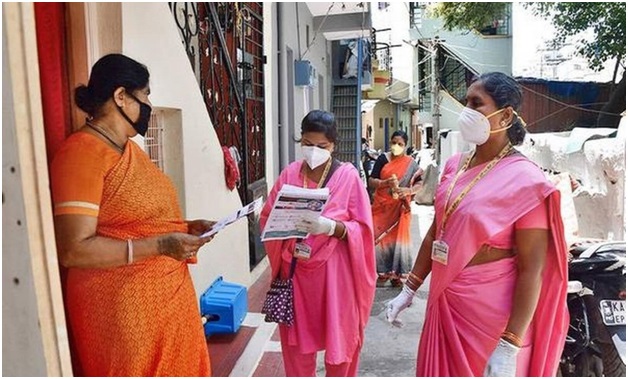
- 09 Oct 2023
Why in the News?
The government is planning to give incentives to ASHA health activists for mobilising eligible individuals for sickle cell disease screening and distribution of sickle cell cards for prevention and early detection of the disease.
About Accredited Social Health Activist (ASHA):
- ASHA serves as a trained female community health activist integral to the National Rural Health Mission initiated by the Government of India.
- Selected from the community and accountable to it, ASHA is trained to bridge the gap between the community and the public health system.
Key Functions:
- Acts as a care provider at the community level.
- Facilitates access to healthcare, medicine, and sanitation services.
- Health Awareness: Raises awareness of health issues among marginalized sections within the community.
- Advocate for Women's Health: Champions female health and hygiene standards.
- Advocates for a health-conscious approach to livelihood.
Implementation:
- The ASHA scheme is operational in all States/UTs, except Goa.
- States are mandated to employ at least one ASHA worker per every 1000 people.
- Inclusive Selection Process: The selection process involves various community groups, self-help groups, Anganwadi Institutions, and local committees.
Selection Criteria:
- Rural ASHA: Preferably a literate woman resident, married/widowed/divorced, aged 25 to 45 years, and preferably educated up to the 10th standard.
- Urban ASHA: Identified from vulnerable clusters, belonging to specific vulnerable groups, with good communication and leadership skills.
Compensation:
- Primarily an honorary volunteer compensated for specific situations.
- Ranges from Rs 2,000 to Rs 7,000, depending on the state.
- Incentives: Eligible for incentives under various national health programs.
Adani Ports' Flagship Mundra Port Completes 25 Years (ET)
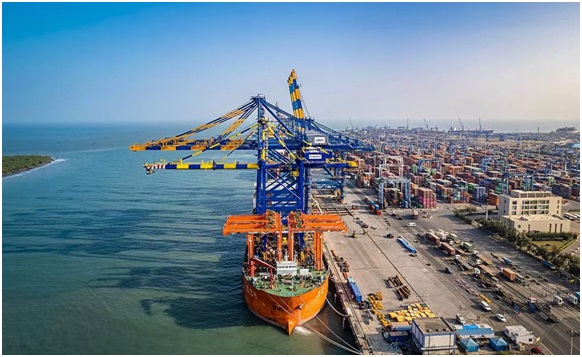
- 09 Oct 2023
Why in the News?
Mundra Port in Gujarat has completed 25 years of its operations, highlighting its expansion and evolution as one of the largest ports globally.
About Mundra Port:
- Mundra Port stands as India's largest private and container port, situated on the north shores of the Gulf of Kutch near Mundra in the Kutch district of Gujarat.
- As a deep-draft, all-weather port, it holds the distinction of being a Special Economic Zone (SEZ).
- Managed by Adani Ports and Special Economic Zone Limited (APSEZ), the port is a pivotal player in India's cargo movement, accounting for nearly one-fourth of the nation's total.
- Mundra Port plays a crucial role in managing 33% of the country's container traffic.
- Key Features: Strategic Location: Positioned on the Gulf of Kutch, Gujarat.
- Handling Capacity: With an impressive capacity of 260 MMT, the port efficiently manages over 155 MMT (FY 2022-23), contributing to almost 11% of India's maritime cargo.
- Infrastructure: Boasting 26 berths and two single-point moorings, the port accommodates diverse vessels and handles various cargo types, including containers, dry bulk, break bulk, liquid cargo, and automobiles.
- Coal Import Terminal: Home to the nation's largest coal import terminal, Mundra facilitates swift cargo evacuation with minimal turnaround time.
- Rail Connectivity: The port's rail network is seamlessly integrated into the national rail network, ensuring efficient cargo handling for destinations across India.
'World's Largest Meditation Centre': PM Modi inaugurates Swarved Mahamandir in Varanasi (ET)

- 19 Dec 2023
Why is it in the News?
Prime Minister Narendra Modi inaugurated the world’s largest meditation centre, Swarved Mahamandir, in Varanasi on December 18.
About the Swarved Mahamandir:
- The Swarved Mahamandir stands as the world's largest meditation centre, accommodating 20,000 individuals in collective contemplation.
- Situated in Varanasi, Uttar Pradesh, this spiritual haven aspires to cast a luminous spiritual aura, enveloping the globe in a state of tranquil attentiveness.
- Named after the Swarved, a profound spiritual text penned by Sadguru Shri Sadafal Deoji Maharaj, the visionary behind Vihangam Yoga and an enduring yogi, the temple serves as a bastion for disseminating Swarveda teachings.
- Emphasizing Brahma Vidya, a profound body of knowledge, it guides spiritual seekers toward sustaining an unwavering equilibrium of peace and happiness.
- Architecturally, the Mahamandir is an imposing seven-floor superstructure, adorned with a captivating design featuring 125-petal lotus domes.
- Crafted from teakwood, the intricate carvings embellishing the ceiling and doors add to its allure.
- Pink sandstone envelops the temple walls, complemented by an enchanting garden featuring medicinal herbs.
- Imprinted on the Mahamandir's walls are verses from the Swarveda, serving as an enduring testament to the spiritual wisdom that resonates within its sacred confines.
What is Vihangam Yoga?
- Vihangam Yoga, an indigenous form of Yoga and meditation, was established by Sadguru Sadafal Deo Ji Maharaj in 1924.
- The nomenclature of this practice is derived from two foundational words: "Vihag," signifying bird, and "Yog," denoting union.
- The name encapsulates the profound concept of a bird ascending from the terrestrial realm, soaring high and unbounded in the sky.
- This symbolism mirrors the ultimate aim of Vihangam Yoga – the liberation of the soul from attachments to the material world, allowing it to recognize and embrace its innate, unshackled essence.
- Only through this liberation can an individual's consciousness seamlessly merge with the universal consciousness, often referred to as the Supreme Being, leading to a state of enduring tranquillity and bliss.
India's Akash missile engages four targets at once at 25km, a global first (ET)

- 18 Dec 2023
Why is it in the News?
India demonstrated the capability of the Akash missile system to engage four aerial targets simultaneously at a range of 25 kilometres, the Defence Research and Development Organisation (DRDO) said on Sunday.
Context:
- During the recent Exercise Astrashakti 2023, a solitary unit of the Akash weapon system demonstrated its capability by effectively engaging and eliminating four unmanned targets simultaneously.
- This showcase positions India as the pioneer, being the first country to showcase the proficiency of engaging multiple targets at considerable distances concurrently through command guidance from a single firing unit.
About the Akash Surface-to-Air Missile (SAM) Defence System:
- The Akash Surface-to-Air Missile (SAM) Defence System is a Short-Range Surface-to-Air Missile (SRSAM) designed to safeguard vulnerable areas and points from airborne threats.
- Developed indigenously by the Defence Research and Development Organisation (DRDO), it boasts several notable features:
- Versatility: Capable of simultaneously engaging multiple targets and effectively neutralizing manoeuvring threats, including unmanned aerial vehicles, fighter aircraft, cruise missiles, and helicopter-launched missiles.
- Electronic Counter-Counter Measures (ECCM): Equipped with built-in ECCM features, enhancing its resilience against electronic countermeasures.
- Flexible Deployment: The entire system is configured for launch from both static and mobile platforms such as battle tanks and wheeled trucks, ensuring adaptable deployment options.
- Transportability: Road and rail transportable, with swift mobilization and deployment capabilities, facilitating rapid response scenarios.
- Range: Capable of engaging aerial targets at a distance of approximately 25 km.
- Altitude of Operation: Ranging from 100 meters up to 20 km.
- Weight: 710 kg.
- Guidance System: Command Guidance.
- Automation: Fully automatic with a quick response time from target detection to neutralization.
- Open-System Architecture: Designed with an open-system architecture, ensuring adaptability to current and future air defence environments.
Saint Lucia’s Tax Inspectors without Borders (TIWB) programme launched in partnership with India (ET)
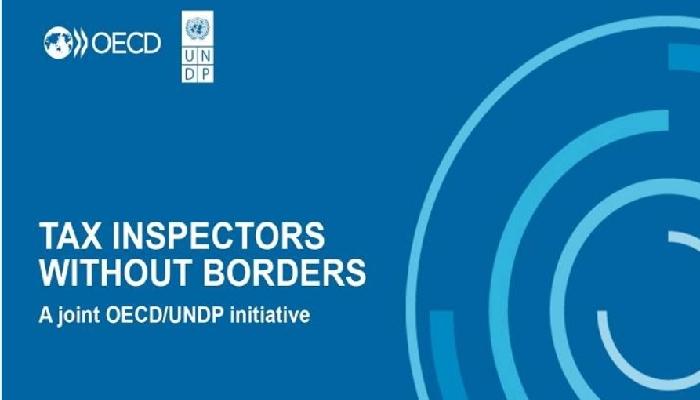
- 16 Dec 2023
Why is it in the News?
India will help Saint Lucia in strengthening its tax administration by transferring technical knowledge and skills to its tax administration, and sharing best practices under the ‘Tax Inspectors Without Borders (TIWB) programme’.
Key Highlights:
- India has been chosen as the Partner Administration and will provide Tax Experts for this programme.
- This programme is expected to be of 12-18 months’ duration in which India, in collaboration with the TIWB Secretariat and support of the UNDP Country Office, Barbados and the Eastern Caribbean, aims to aid Saint Lucia in strengthening its tax administration by transferring technical knowledge and skills to its tax administration, and through sharing of best practices.
- The focus of the programme will be on the effective use of automatic exchange of information under the Common Reporting Standard (CRS) framework.
What is Tax Inspectors without Borders programme?
- Tax Inspectors Without Borders (TIWB) is a joint initiative of the Organisation for Economic Co-operation and Development (OECD) and the United Nations Development Programme (UNDP).
- It is designed to support developing countries to build tax audit capacity.
- TIWB facilitates well-targeted, specialised tax audit assistance in developing countries around the world.
- Under TIWB, tax audit experts work alongside local officials of developing country tax administrations on tax audit and tax audit-related issues.
- TIWB aims to transfer technical know-how and skills to developing countries’ tax auditors, as well as share general audit practices.
- The host administrations of developing countries are the lead partners in TIWB programmes, clearly specifying their needs and scope of work.
- A dedicated central unit (TIWB Secretariat) jointly managed by OECD and UNDP operates as a clearing house to match the demand for auditing assistance with appropriate expertise.
- TIWB is a capacity-building programme.
Urea Gold (ET)
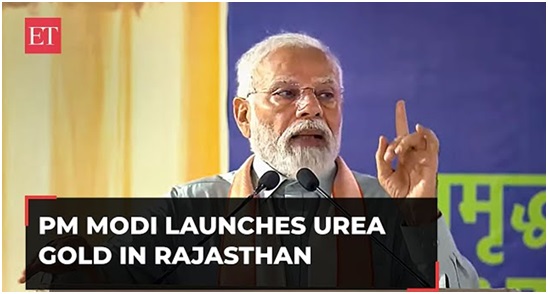
- 27 Jul 2023
Why in the News?
During a recent event held in Rajasthan's Sikar, the Prime Minister unveiled "Urea Gold," a novel type of Urea fertilizer.
About Urea Gold:
- Urea Gold is an advanced variety of Urea that features a Sulphur coating.
- Its primary purpose is to address soil Sulphur deficiency while also offering cost-saving benefits to farmers.
- In comparison to the existing Neem-coated urea, Urea Gold stands out due to its superior economic viability and efficiency.
- The gradual release of nitrogen facilitated by its Sulphur coating enhances crop uptake, and the inclusion of humic acid extends its fertilizing lifespan.
- Notably, Urea Gold not only acts as a substitute for traditional urea but also contributes to a reduction in overall fertilizer usage.
- According to a report, using 15 kg of Urea Gold can provide comparable benefits to 20 kg of conventional urea, making it a more efficient and effective choice for farmers.
INDIAai (ET)

- 26 Jul 2023
Why in the News?
In a recent development, INDIAai and Meta India entered into a memorandum of understanding (MoU) to create a collaborative framework for cooperation and partnership in the realm of artificial intelligence (AI) and emerging technologies.
About INDIAai:
- INDIAai, the National artificial intelligence Portal of India, was launched on 28th May 2020 as a comprehensive platform.
- It serves as a knowledge portal, research organization, and ecosystem-building initiative.
- Its primary aim is to foster unity and encourage collaborations within India's AI ecosystem by bringing together various entities.
- This joint initiative is supported by the Ministry of Electronics and IT (MeitY), the National e-Governance Division (NeGD), and NASSCOM.
- NeGD, established in 2009 under the Digital India Corporation (a not-for-profit company set up by MeitY), plays a crucial role in this venture.
- NASSCOM, a prominent not-for-profit industry association, serves as the apex body for India's IT and IT-enabled products and services sector.
- INDIAai functions as the central knowledge hub for artificial intelligence and related fields, catering to aspiring entrepreneurs, students, professionals, academics, and all other stakeholders in the domain.
What is Artificial intelligence (AI)?
- Artificial Intelligence (AI) is a branch of computer science: It involves the development of intelligent machines that can perform tasks typically requiring human intelligence.
- Machine Learning and Algorithms: AI systems utilize machine learning algorithms to process vast amounts of data, learn from it, and improve their performance over time without explicit programming.
- Applications in various fields: AI finds applications in diverse domains, including natural language processing, image recognition, robotics, healthcare, finance, and autonomous vehicles, among others. Its goal is to mimic human cognitive abilities, such as problem-solving, reasoning, and decision-making.
Maitree Super Thermal Power Project (STPP) (ET)
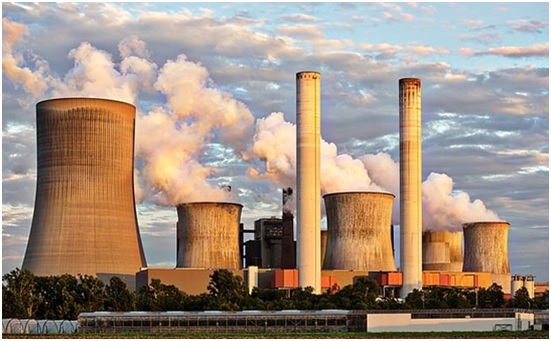
- 26 Jul 2023
Why in the News?
The synchronization of the 660-MW unit-2 of the 1,320-MW Maitree Super Thermal Power Project (STPP) with the electricity grid in Bangladesh was recently announced by the state-owned engineering firm Bharat Heavy Electricals.
- Location:
- It is situated in Rampal, in the Bagerhat district of Bangladesh's Khulna division.
- It will be one of the biggest coal-fired power plants in Bangladesh, along with the Payra Power Plant in Pataukhali, which commenced test production in January 2020.
- Capacity and Cost:
- The power station has a capacity of 1320 MW (2x660 MW) and is estimated to cost around $2 billion.
- Financing Plan:
- The project is being developed under India's tax concessions finance plan, aiming to enhance Bangladesh's national grid by an additional 1320 MW.
- Financed through a £1.3bn ($1.6bn) loan from the Export-Import (EXIM) Bank of India.
- Implementing Entity:
- India’s Bharat Heavy Electricals Limited (BHEL) is responsible for constructing the power plant on behalf of Bangladesh-India Friendship Electricity Company Private Limited (BIFPCL).
- Commercial Operation:
- The first unit of the super thermal power plant is expected to commence commercial operation in early October, representing a significant milestone in the growing cooperation between India and Bangladesh in the power industry.
- Future Expansion:
- In the subsequent year, the power plant's Unit-II, also known as the Rampal coal-fired power project, is scheduled for implementation.
Air Quality Life Index (AQLI) report (Economic Times)
- 31 Aug 2023
What is the News ?
Annual update of the Air Quality Life Index (AQLI) 2023 has been released.
Facts About:
India ranked second among the countries worst hit by air pollution with Bangladesh topping the list.
- Nepal ranked third followed by Pakistan and Mongolia.
PMI in South Asia: Particulate pollution has increased9.7 percent from 2013 to 2021 in South Asia.
- In India, PM2.5 levels rose 9.5 percent; in Pakistan 8.8 percent; and in Bangladesh, levels rose by 12.4 percent over this same time interval.
Life Expectancy: An average Indian citizen loses around 5.3 years of life expectancy due to air pollution.
- While an average citizen in Bangladesh loses 6.8 years of their life to air pollution
- An average Chinese citizen has seen an improvement — from 4.7 years of life expectancy being lost in 2013 to 2.5 now, an improvement of 2.2 years,
Pollution in India: Pollution in India has increased from 56.2 µg/m3 in 2020 to 58.7 µg/m3 in 2021.
- This is more than 10 times the WHO guideline of 5 µg/m3.
Health Risk: Pollution is biggest threat to human health in India in terms of lowering life expectancy, beating cardiovascular diseases and child and maternal malnutrition.
- While particulate pollution takes 5.3 years off the life of the average Indian, cardiovascular diseases reduce life expectancy by about 4.5 years, and child and maternal malnutrition reduces life expectancy by 1.8 years.
Poor AIr in Delhi: It is the most polluted city in the world.
- Delhi’s annual average PM2.5 level in 2021 was found to be 126.5 µg/m3, which is more than 25 times the World Health Organization (WHO) guideline of 5 µg/m3.
- Delhi residents are on track to lose 11.9 years of life expectancy on average relative to the WHO limit and 8.5 years relative to the national guideline if the current pollution levels persist.
About Air Quality Life Index (AQLI)
- AQLI measures the impact of particulate pollution on life expectancy.
- It is released by Energy Policy Institute at University of Chicago (EPIC).
Source: https://economictimes.indiatimes.com/news/india/your-life-is-getting-short-by-5-years-due-to-air-pollution-chicago-university-report-reavels-scary-numbers/articleshow/103198930.cms?from=mdr
Moody’s Report on Demographic Dividend (Economic Times)
- 29 Aug 2023
What is the News ?
Alongwith the population growth, strong education and quality infrastructure are key to reap economic gains in India: Moody
Facts About:
Relation between population growth and economic growth:
Population Growth as a Driver of Economic Growth (Early Stages)
- A larger population means a larger labor force, which can lead to increased production, consumption, and innovation. This phenomenon is often referred to as the demographic dividend. When the ratio of working-age individuals to dependents (children and elderly) is high, it can create a favorable environment for economic expansion.
Labor Force and Human Capital:
- A growing population can provide a larger labor force, which, if properly educated and skilled, can contribute to higher productivity and economic growth. However, for population growth to positively impact economic growth, there must be adequate investments in education, healthcare, and skill development to ensure that the workforce is productive and capable of contributing to economic activities.
Consumption and Demand:
- A larger population can lead to increased consumption and demand for goods and services, which can stimulate economic growth. Businesses may expand to meet this increased demand, leading to higher levels of investment and production.
Urbanization and Productivity:
- Population growth often leads to urbanization, as people move from rural areas to cities in search of better opportunities. Urbanization can lead to increased productivity due to factors like economies of scale, improved infrastructure, and better access to markets and resources.
Resource Constraints and Negative Impacts:
- Rapid population growth without corresponding economic development and resource management can lead to resource constraints, environmental degradation, and increased competition for limited resources. This can have negative effects on economic growth in the long run.
Demographic Transition:
- As economies develop and standards of living improve, birth rates tend to decline. This results in a shift from high population growth rates to lower ones. During this demographic transition, countries can experience a period of accelerated economic growth due to a relatively smaller dependent population.
Aging Population:
- In more advanced economies, declining birth rates and increased life expectancy can lead to an aging population. While this may result in a decline in the working-age population, it can also create opportunities for innovation and growth in industries related to healthcare, elderly care, and technology.
Quality of Institutions and Policies:
- The relationship between population growth and economic growth is influenced by the quality of institutions and policies in place. Good governance, effective healthcare systems, education policies, and infrastructure development play a crucial role in determining how population growth impacts economic growth.
In summary, the relationship between population growth and economic growth is not deterministic, and its effects can vary widely based on numerous factors. While a growing population can potentially provide a demographic dividend and contribute to economic growth, this positive outcome depends on factors such as investments in human capital, infrastructure, and sound governance.
Additionally, as countries progress in their development, the relationship often becomes more nuanced, with demographic transitions and changingpopulation structures influencing economic dynamics.
Factors responsible for India’s population growth
- Falling mortality: The IMR has decreased from 40.7 in 2015-16 to 35.3 in 2019-21.
- Increasing Life expectancy at birth: It reached to 69.7 years in the 2015-19 period from 31 in 1947.
- Unintended pregnancies: 1 in every 7 unintended pregnancies of world occur in India.
- Lack of female education, child marriage and early marriages, etc.
Challenges caused by growing population
- Pressure on resources: As India has only 2.45% of the global surface area and 4% of the water resources.
- Pandemic outbreaks: Due to increasing urbanization and expansion of humans in wild habitats.
- Disruption and Conflicts: Due to rise in struggle for finite resource.
- Decline in social indicators: Due to suboptimal public expenditures on health and education may not be possible.
- Pressure on economy: Due to low skilled workforce, stagnant economy, unemployment, etc.
- Widening gender gap: If expenditure on health and education decline, women would suffer the most.
Way ahead to harness the benefits of population growth
- Supporting Reproductive Justice: Provisions of safe and effective methods of family planning and freedom to make the best reproductive choice.
- Education for all: Educational attainment, particularly of girls, enhances intergenerational formation of human capital and has a positive impact on demographic behaviour with respect to nuptiality, fertility, health, etc.
- Foster Inclusive Growth developing democratic institutions to facilitate equity in the society.
- Facilitate migration to bridge the demand and supply of the workforce.
- Investment in green technology and social innovations to adapt to and mitigate climate and environmental changes.
- Better geriatric care, health insurance and pension facilities for 65+ age category.
Source: https://economictimes.indiatimes.com/news/economy/indicators/india-must-focus-on-education-and-infra-for-growth-moodys-report/articleshow/103147127.cms?from=mdr
Agnibaan SOrTeD rocket (Economic Times)
- 19 Aug 2023
What is the News ?
A Chennai-based start-up AgniKul Cosmos, has commenced the process of integrating its cutting-edge Agnibaan SOrTeD rocket at its private Launchpad in Sriharikota.
Facts About:
- The integration process was initiated on Independence Day on August 15, 2023.
- A successful launch would make AgniKul the second Indian space tech start-up to send its launch vehicle into space after Skyroot Aerospace.
- AgniKul: Established in 2017, by aerospace engineers Srinath Ravichandran and Moin SPM, along with IIT-Madras faculty member Prof. Sathyanarayan R Chakravarthy.
About Agnibaan SOrTeD (SubOrbital Technological Demonstrator):-
Type: single-stage launch vehicle.
Powered by: AgniKul’s patented Agnilet engine.
- Agnilet engine: It is the world’s sole single-piece 3D-printed engine.
- It is a single-piece, 6 kilonewton (kN) semi-cryogenic engine.
- Initial trial: early 2021.
- Verified at the Vikram Sarabhai Space Centre (VSSC) in Thiruvananthapuram.
- 3D printing: uses materials such as plastics and metals to convert products envisaged on computer-aided design to real three-dimensional items.
Payloads: up to 100 kg.
Altitude: 700 km
- It can carry payloads in five different configurations. (LVM3-M2 rocket)
Stages: It is a customizable launch vehicle that could be launched in one or two stages.
Unique feature: unlike traditional sounding rockets that launch from guide rails, it will lift off vertically and follow a predetermined trajectory to perform a precisely orchestrated set of maneuvers during flight.
The rocket’s first stage could have up to seven Agnilet engines, depending on the mission, which are powered by Liquid Oxygen and Kerosene.
The rocket is also designed for launch from more than 10 different launch ports.
To ensure its compatibility with multiple launch ports, AgniKul has built a launch pedestal named ‘Dhanush’.
- It will support the rocket’s mobility across all its configurations.
Source: https://economictimes.indiatimes.com/news/science/chennai-based-agnikul-prepares-for-maiden-sub-orbital-flight-of-agnibaan-rocket/articleshow/102805834.cms?from=mdr
PM Vishwakarma (Economic Times)
- 17 Aug 2023
What is the News ?
The Cabinet Committee on Economic Affairs has approved a new Scheme named “PM Vishwakarma”
Facts About:
Type: Central Sector Scheme
Aim: To strengthen and nurture the Guru-Shishyaparampara or family-based practice of traditional skills by artisans and craftspeople working with their hands and tools.
– To improve the quality, as well as the reach of products and services of artisans and craftspeople and to ensure that the Vishwakarmas are integrated with the domestic and global value chains.
Coverage: The scheme will provide support to artisans and craftspeople of rural and urban areas across India.
– Eighteen traditional trades will be covered under the scheme. These include carpenter, boat maker, armourer, blacksmith, hammer and tool kit maker, locksmith, goldsmith, potter, sculptor, stone breaker, cobbler, mason, basket/mat/broom maker/coir weaver, traditional doll and toy maker, barber, garland maker, washerman, tailor and fishing net maker.
Duration of the scheme: Five years (FY 2023-24 to FY 2027-28).
Key Features of the scheme: Artisans and craftspeople will be provided a recognition through PM Vishwakarma certificate and ID card.
– The scheme has a provision of credit support of up to ?1 lakh (first tranche) and ?2 lakh (second tranche) with a concessional interest rate of 5%.
– It also has a provision to provide skill upgradation, incentive for toolkit as well as digital transactions and marketing support.
– Skilling programmes will take place at both basic and advanced types. Participants will get a stipend of ?500 per day while undergoing training.
– Beneficiaries will also receive up to ?15,000 to buy modern tools.
Source: https://economictimes.indiatimes.com/news/politics-and-nation/pms-vishwakarma-scheme-launch-on-sept-17-70-ministers-to-attend-event-at-70-locations/articleshow/103559849.cms?from=mdr
China’s economy slides into deflation (Economic Times)
- 11 Aug 2023
What is the News ?
Facts About:
China’s recent bout of deflation, marked by a decline in consumer prices for the first time in over two years, has sparked debates about its implications and causes.
- This article delves into the intricacies of deflation, its potential impact on economic growth, and the unique circumstances driving deflation in China.
Understanding Deflation
- Deflation Defined: Deflation refers to a sustained decrease in the general price level of goods and services within an economy.
- Historical Context: Historically, the terms “inflation” and “deflation” were linked to changes in the money supply, with “inflation” representing a rise and “deflation” a fall in money supply.
Concerns Associated with Deflation
- Economic Slowdown: Many economists view deflation as an indicator of dwindling demand for goods and services, potentially leading to an economic slowdown.
- Demand-Supply Dynamics: Falling prices may prompt consumers to delay purchases, hampering demand and triggering a ripple effect throughout the economy.
- Resource Utilization: A certain level of inflation is deemed necessary for optimal resource utilization, ensuring full economic potential is realized.
Varied Perspectives on Deflation
- Positive Instances: Some economies have experienced deflation during periods of robust growth. Japan witnessed increased real income levels despite persistent deflation.
- Economic Crises: Deflation can arise during economic crises when cautious spending and resource reallocation occur.
- Consumer Demand and Prices: Some economists argue that consumer demand dictates prices, rather than the other way around.
China’s Deflation Scenario
- Policy Measures: China’s central bank maintained low interest rates to stimulate demand amid the post-pandemic recovery.
- Property Sector Turmoil: China’s pre-pandemic property sector challenges, affecting GDP contribution, may be a root cause of the current deflationary trend.
- Complex Factors: While liquidity may not be the core issue, comprehensive analysis of money supply and monetary transmission is necessary to determine the underlying cause.
Repercussions of Chinese Deflation
[A] Positive Impacts:
- Cheaper Imports: If Chinese goods become cheaper due to deflation, it could lead to lower import costs for India, benefiting consumers and businesses that rely on Chinese imports.
- Lower Input Costs: Reduced prices for raw materials and intermediate goods from China could lower production costs for Indian industries that depend on these inputs.
- Global Supply Chains: If Chinese deflation reduces the cost of production within global supply chains, Indian businesses integrated into these chains might experience cost savings.
- Improved Trade Balance: Cheaper Chinese imports can contribute to a more favorable trade balance for India, especially if it leads to reduced import bills.
[B] Negative Impacts:
- Export Competition: Cheaper Chinese exports due to deflation could increase competition for Indian exports in international markets, potentially affecting certain Indian industries.
- Import Dumping: A flood of cheap Chinese goods into the Indian market could harm domestic producers, leading to job losses and economic strain.
- Investment Flows: A slowdown in China’s economy caused by deflation might lead to reduced investor confidence and affect foreign direct investment (FDI) flows to India.
- Currency Effects: If China’s central bank devalues its currency to boost exports in response to deflation, it could lead to a stronger Indian rupee, impacting India’s export competitiveness.
- Commodity Prices: Reduced demand for commodities from China due to deflation could lead to lower global commodity prices, affecting Indian exporters of raw materials.
Conclusion
- China’s encounter with deflation amidst efforts to boost demand and stabilize its economy presents a multi-faceted challenge.
- Understanding the nuances of deflation, its interaction with demand dynamics, and China’s unique economic landscape are vital.
- As China navigates its path forward, policymakers must consider the interplay of factors, including the property sector’s impact and broader economic goals.
Source: https://www.google.com/url?sa=t&rct=j&q=&esrc=s&source=web&cd=&ved=2ahUKEwidya2w1qGBAxVcd2wGHTEWAzQQFnoECC0QAQ&url=https%3A%2F%2Fm.economictimes.com%2Fopinion%2Fet-editorial%2Fwhy-chinas-economy-is-down-not-out%2Farticleshow%2F102731901.cms&usg=AOvVaw1udWdqudtF2oR3qve57xGB&opi=89978449
